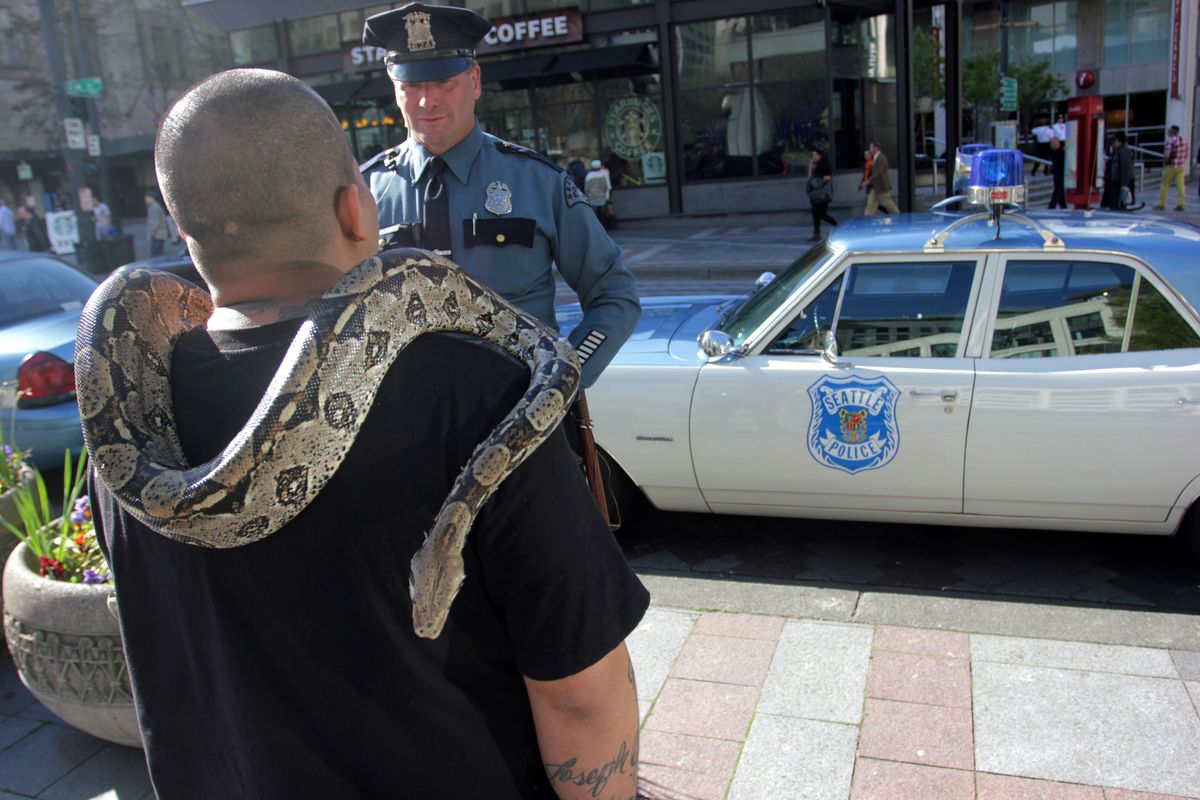Seattle police officer patrols in vintage cruiser

SEATTLE – At a recent scene of a fight on Seattle’s waterfront, most of the gawkers weren’t looking at the handcuffed and yelling suspect or the bloodied victim. Instead, their attention and cameras were directed at a fully restored 1970 Plymouth Satellite police cruiser.
It’s the common reaction to the vehicle driven by 30-year-veteran Officer Jim Ritter. By his count, the Plymouth has caused at least three fender-benders.
“People will stop their cars and run across three lanes of traffic to get a picture of it and park their car in the middle of the street and block traffic. It has its drawbacks, but if those are the worst things to happen, I’ll take it any day over having people not wanting to approach the police,” Ritter said.
The cruiser is part of the Seattle Metropolitan Police Museum, a nonprofit that Ritter founded in 1997. Along with local car shops, Ritter and volunteers have 14 vintage police cars. They have restored six vehicles for the King County Sheriff’s Office, Washington State Patrol and the Seattle Police Department, and are in the process of fixing up another eight, which includes a 1979 Dodge Aspen. Under an agreement with the Seattle Police Department, Ritter uses the Plymouth as his everyday cruiser.
The initial intent behind the Plymouth was to use it as a community relations and educational tool, drive it in parades and that sort of thing. But Ritter began to notice that people were attracted to the car. In one of the first instances, he said, apparent gang members approached him, dropped their swagger, and wanted to chat about the car.
Talking to the public has become “effortless.”
The Plymouth has been around since 2007, but has seen a resurgence in attention through social networking sites. The attention is welcomed. The Seattle Police Department has been in the midst of controversy, with the Department of Justice investigating it for racial profiling and community protests over the failed use of airborne drones.
“I’m a working police officer. So when I’m downtown I’m assigned to a squad and I’ll respond to calls with my squad mates. They will range from anywhere from assisting motorist to armed robberies to disturbances and this car will go to all of them,” Ritter said.
The museum collection includes a 1970 Plymouth Fury, 1963 Plymouth Savoy and 1976 Dodge Dart, among others. The cars aren’t kept at the museum’s location in the SoDo neighborhood because there isn’t enough space.
To bring the Plymouth back to life, Ritter and his friends had to do meticulous research that included getting the paint mix right, track down parts over the Internet and get a bit of luck. The siren rack on the Plymouth came from a man in Phoenix who had bought it decades ago. The car itself came from Nebraska.
It runs on about 330 horsepower, Ritter said. Unlike today’s cars, the Plymouth is noisy and bumpy. Besides a modern radio, the inside is kept almost as it was in 1970. No computer or other gadgets. There is no air conditioning. Ritter also wears a uniform of the era.